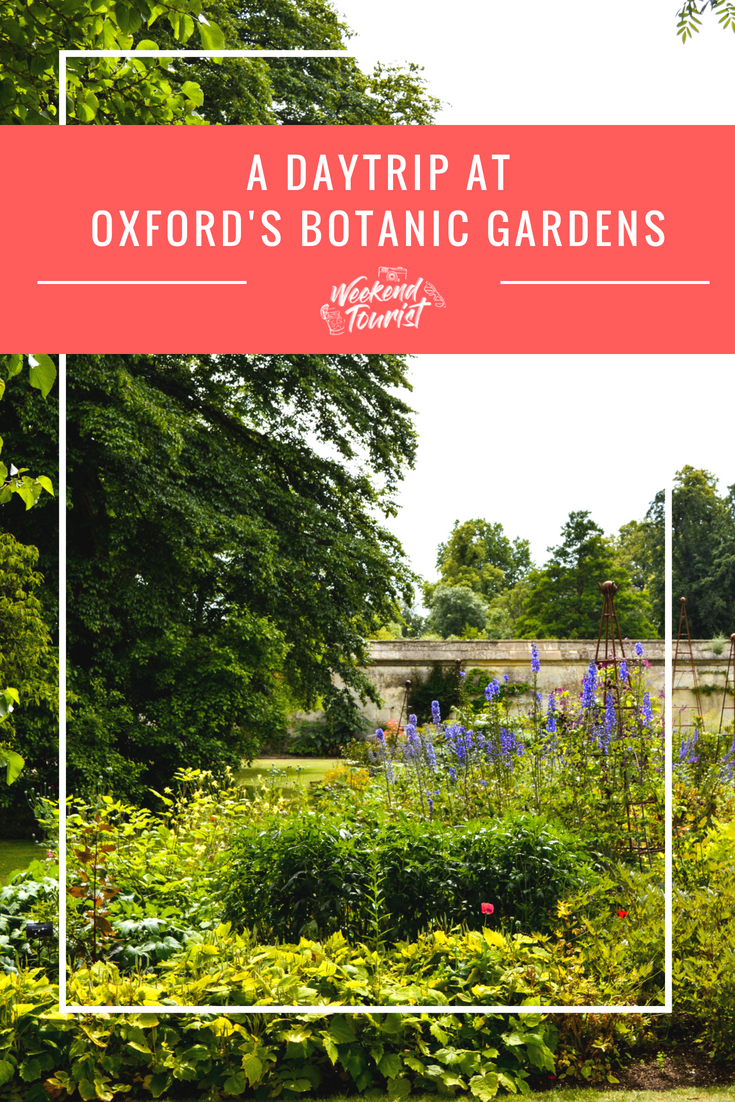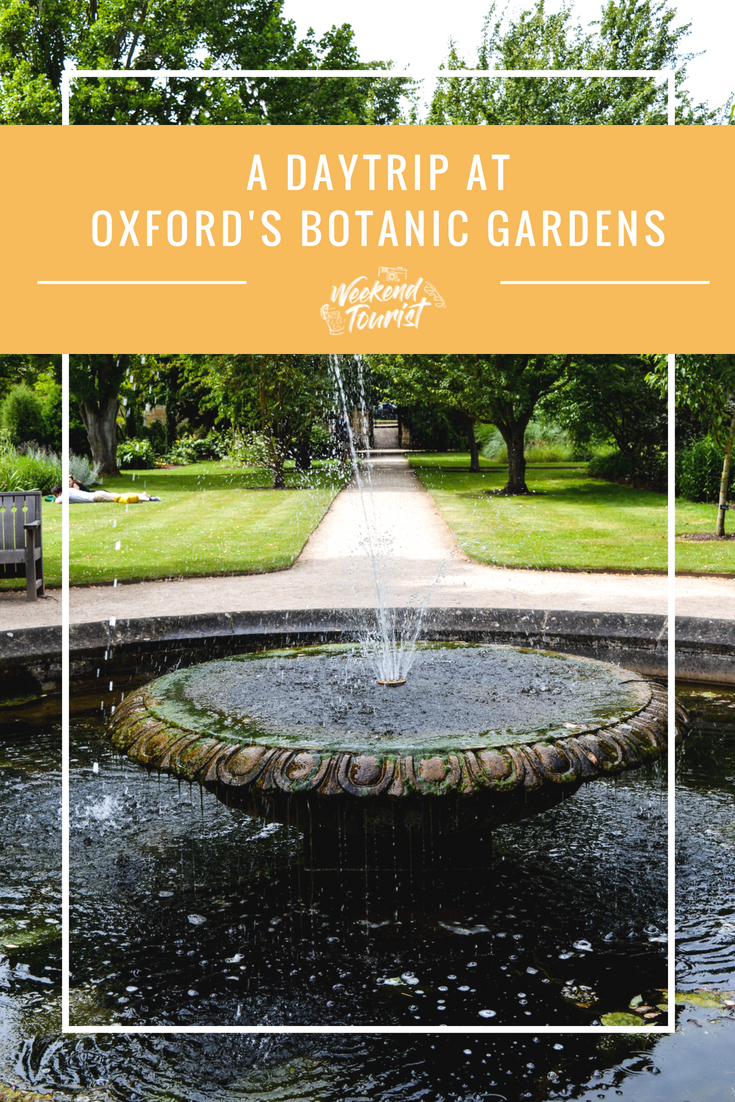
You know when you’ve entered an established garden when it has got its own gin – the Physics Gin uses medicinal botanicals you’d find in the beds at the University of Oxford’s Botanic Gardens. The garden was founded as the Oxford Physic Garden in 1621, making it the oldest botanical garden in Britain by more than half a century. It was founded to grow plants to support the teaching of medicine – which it still does today.
PIN ME FOR LATER
A spot of history…
Sir Henry Danvers originally donated £5000 to found the garden, which built the walls and archway, but was not enough to employ anyone to cultivate the garden. Jacob Bobart, the first superintendent, had to fund the planting out of his own earnings from a series of Oxford’s taverns.

The garden still features one of the original plants, a yew tree in the walled garden. It is fitting that the oldest tree in the first physic garden in the country has been the source of drugs used to treat breast, cervical and ovarian cancers.
The black pine in the southeast corner of the walled garden was grown from seed in 1795 and planted in its present position in 1800 by Professor John Sibthorp. Since then it has survived hurricane force winds and temperatures ranging from minus thirty degrees Celsius to plus thirty degrees Celsius, far more than most animals can tolerate.

In 1945 the garden expanded for the first time in 300 years when the area that is now the lower garden was acquired. The area was originally part of Christchurch meadow and had been used as part of the ‘dig for victory’ campaign during the second world war. At the end of the war, the area was offered to the garden at a peppercorn rent.

Our highlights
Tom particularly wanted to see the Merton Borders. These 75 metre swaths were designed by James Hitchmough, Professor of Horticultural Ecology at the University of Sheffield and uses plants which might be more versatile in our gardens as the climate warms, taking inspiration from North American Prairies, South African grasslands and from the Eurasian areas. It’s designed so that there’s year-round interest – that’s important if you’re a gardener.



My favourite area was the complex of greenhouses, with its giant water lilies and tropical houses – which now will forever remind me of our honeymoon. In 1851, Professor Daubey built the tropical waterlily house after he had seen the giant victoria waterlily at Chatsworth House. The present layout of the glasshouses dates from 1893 though the aluminum superstructures date from 1971.



What you need to know

Tickets are £6 per adult, over the summer it’s open 9am to 5pm (last admission 4.15pm) More information on website: https://www.obga.ox.ac.uk/home Whilst we were there, G&Ds, the iconic Oxford ice-cream chain, had a pop-up van and seating right by the river. It was perfect for rounding off the trip. The gardens are also twinned with Harcourt Arboretum in Oxford. You can easily tag this on to a day’s wandering around Oxford – we did a walk here: Walking tour around Oxford.






